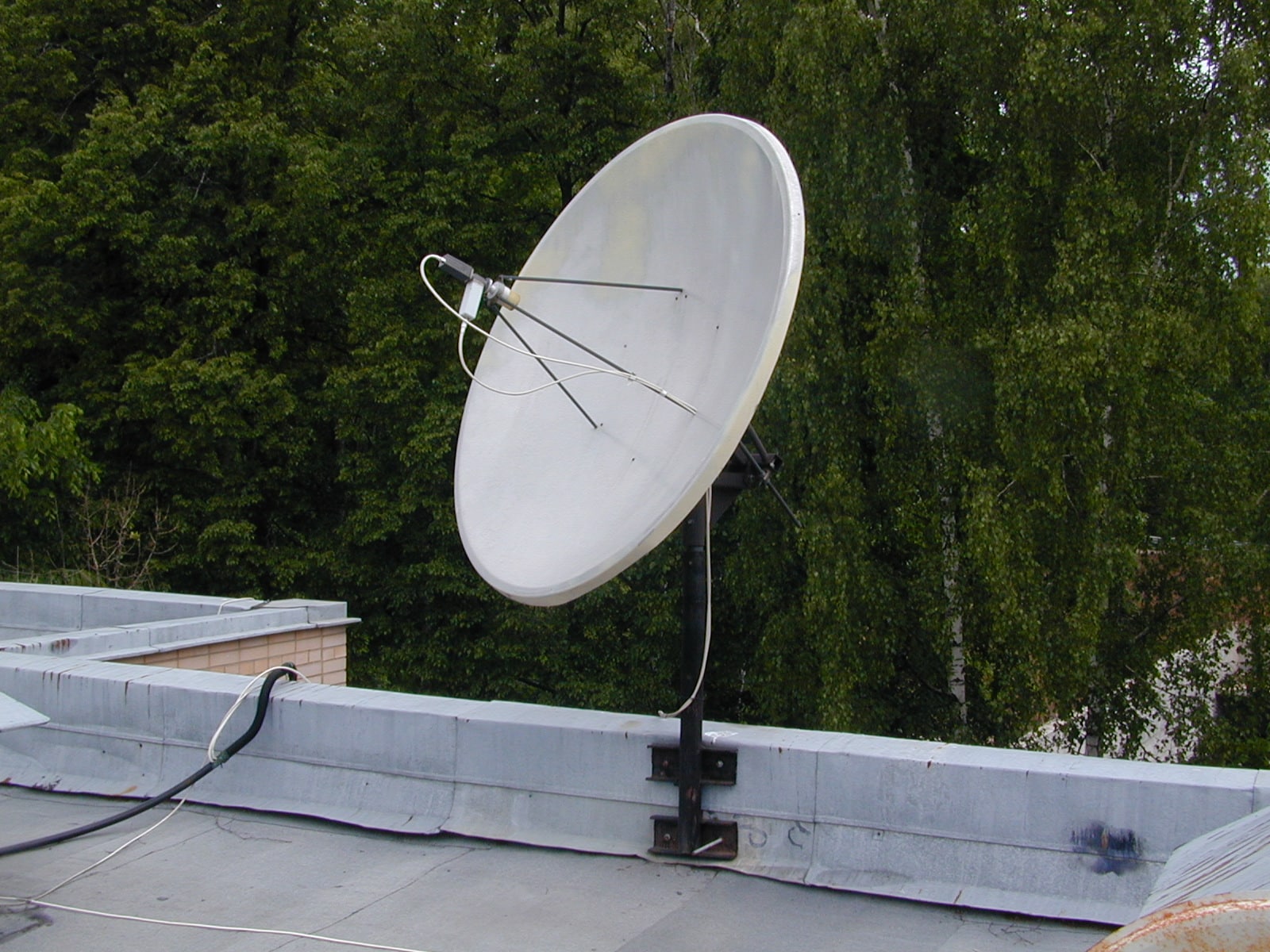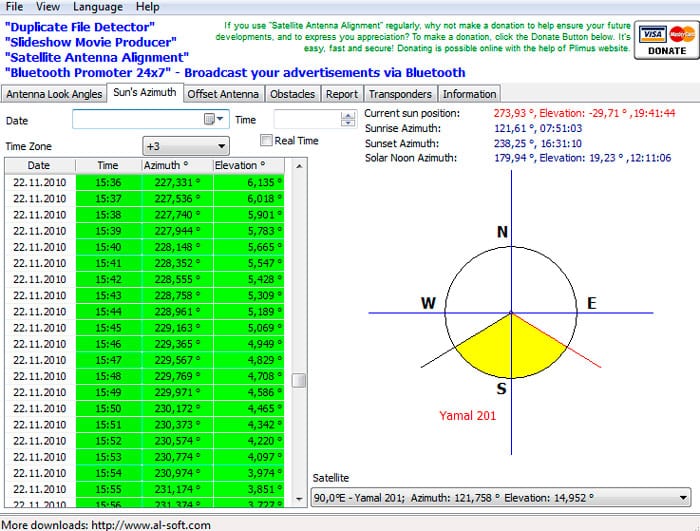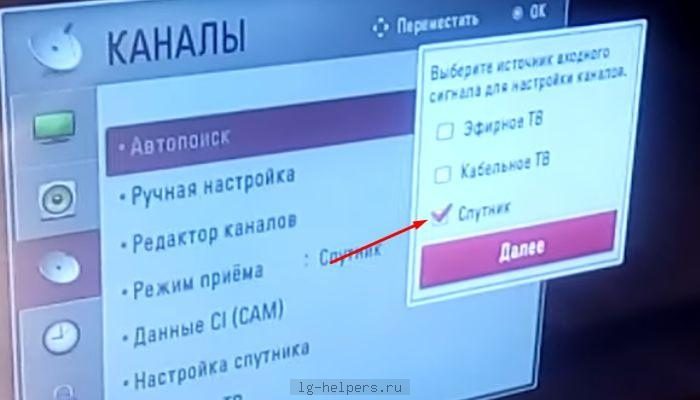A satellite dish has a number of advantages over
other antennas in terms of the quality of the transmitted sound and image. Satellite antennas are divided into offset and direct-focus (toroidal in subscriber
satellite TV is used extremely rarely), each of which has its own advantages and disadvantages. The article tells about the differences, installation, operation of these types of plates.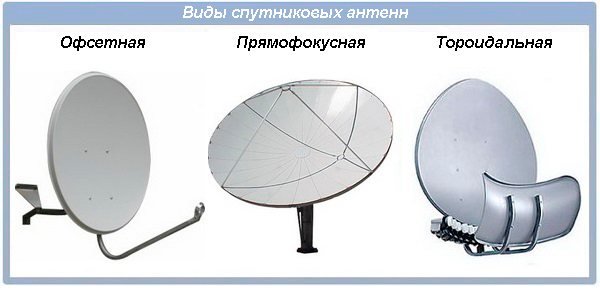
What are offset and direct focus satellite dishes
Antennas with a mirror field are divided into offset and direct focus. Both are mirrored parabolic dishes, but have significant differences. The offset antenna is not as extensively serviced as the second one. There is another name for direct-focus antennas – axisymmetric, since their symmetry is built around one axis. Their mirror is a paraboloid of revolution, the shape is round, the structure contributes to the coincidence of the geometric axis with the electrical one. On the same axis there is Offset antennas have a shifted focus because the reflector is oval. These antennas are newer, they allow you to put a second and even a third converter, which receive more via satellite, depending on where they are. [caption id="attachment_3457" align="aligncenter" width="508"] The
a converter attached to the edges of the reflector with special construction.
 Offset antenna [/ caption] Both antennas have both advantages and disadvantages. A direct-focus antenna allows more efficient use of the mirror area. The offset antenna has a slightly different structure. To obtain an effective area, one has to multiply the physical by the cosine of the angle between two axes: electrical and geometric. But with a direct-focus antenna, a significant piece of the surface is obscured by the converter and its accompanying mount, which does not apply to other types of antennas. Therefore, direct focus antennas are usually quite large. In an axisymmetric antenna, which is raised to a certain positive angle, precipitation accumulates. Offset antennas are installed almost vertically or even tilted down, and they do not accumulate precipitation in themselves. But, since the converter looks up, it must be made airtight, so that water does not seep in. Another advantage of the offset antenna is that the entire center of gravity is shifted down due to the bracket and converter, which add weight to the bottom. Homemade direct focus antenna:
Offset antenna [/ caption] Both antennas have both advantages and disadvantages. A direct-focus antenna allows more efficient use of the mirror area. The offset antenna has a slightly different structure. To obtain an effective area, one has to multiply the physical by the cosine of the angle between two axes: electrical and geometric. But with a direct-focus antenna, a significant piece of the surface is obscured by the converter and its accompanying mount, which does not apply to other types of antennas. Therefore, direct focus antennas are usually quite large. In an axisymmetric antenna, which is raised to a certain positive angle, precipitation accumulates. Offset antennas are installed almost vertically or even tilted down, and they do not accumulate precipitation in themselves. But, since the converter looks up, it must be made airtight, so that water does not seep in. Another advantage of the offset antenna is that the entire center of gravity is shifted down due to the bracket and converter, which add weight to the bottom. Homemade direct focus antenna: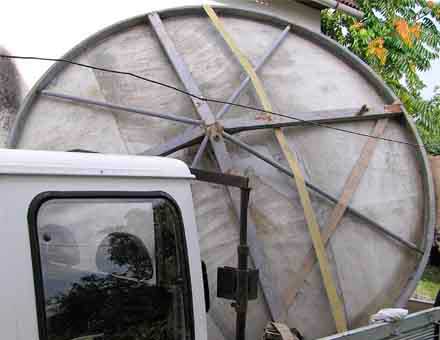
How to install and configure an offset antenna
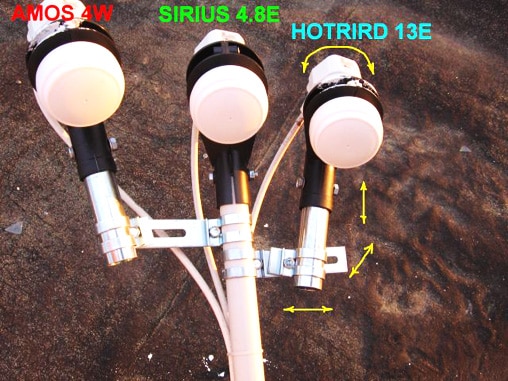 so-called dragon is a satellite dish tuned to the three popular satellites Amos, Astra and HotBird – this is only possible on an offset dish
so-called dragon is a satellite dish tuned to the three popular satellites Amos, Astra and HotBird – this is only possible on an offset dish
cable, the signal goes to the tuner, and the satellite receiver receives the signal passing through the satellite, processes it, decodes it, and transmits it to the TV in the form of a finished “picture”.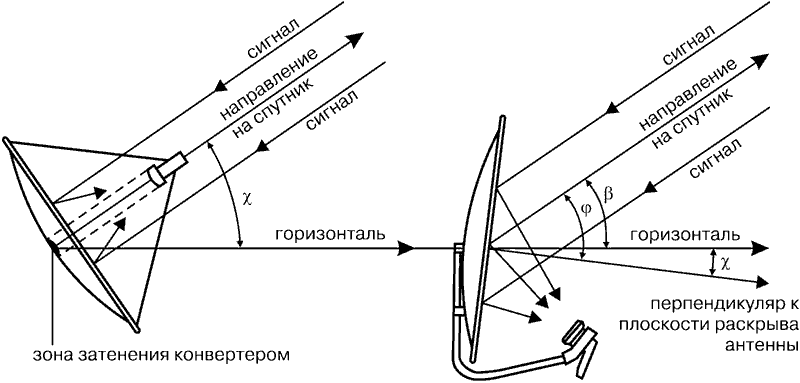
install an antenna , it is necessary to determine where the satellites are in orbit. There are
programs and devices that determine the location, but you can navigate by the plates nearby.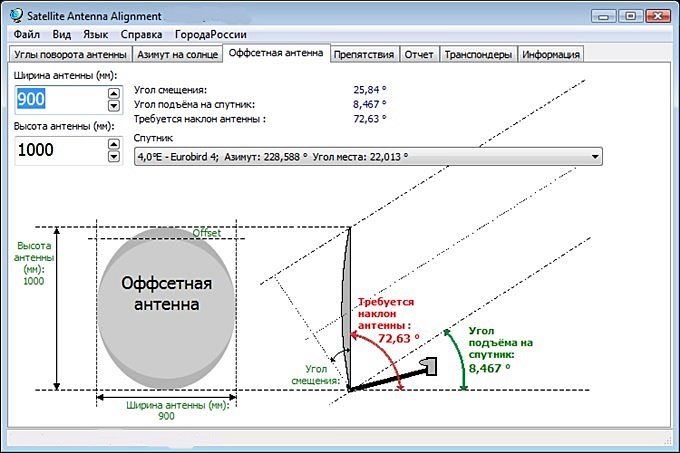
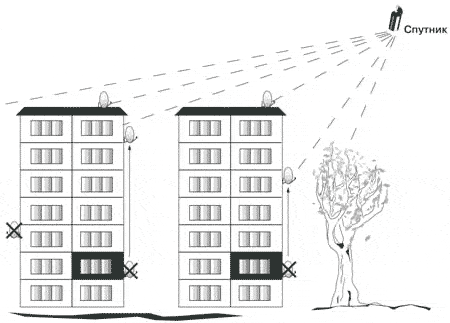
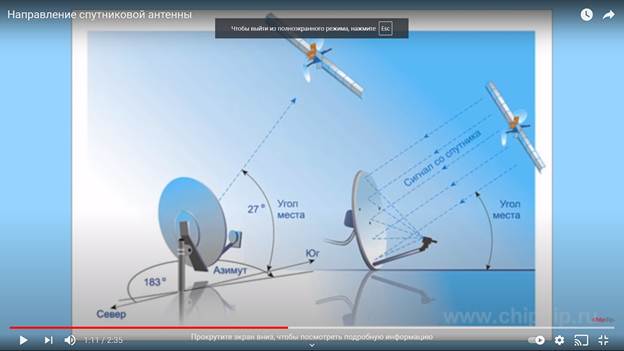

Attention! It is better to install the entire structure of the house and then fix it on the wall mount.
A central converter is placed on the bracket and multifeeds are installed to which the side converters are attached. First, we set the multifeed for the highest satellite (if you are facing the antenna, it is on the left side), fasteners are put on the arc, pulled together, fasteners in the form of a ring must be placed at the other end of this bar, a metal tube is placed there, on which the converters are held. A converter is placed on the multifeed. It is rotated about 100 degrees counterclockwise. One division is usually equal to five degrees. Threaded connection – at six o’clock. Details on how
to set up a satellite dish .
Attention! When installing satellites east of south, the converter must be wrapped in the opposite direction.
We set the second and third converters in the same way, by a smaller number of degrees. We tighten what we have installed. But you need to do it without fanaticism, so as not to overdo it with the moment of effort. We prepare three pieces of wire, clean them and twist them onto F-connectors, clean the ends of the wires in protective rubber casings, put these connectors on. Setting up a satellite dish:
- At the beginning of work, you need to install the main satellite. The wire from the converter is connected to input 1 of DiSEqC, from the output of the DiSEqC switch “Receiver” the cable is connected to the input of the receiver (tuner) and the equipment is tuned to the satellite that we need in a particular case. For this purpose, the satellite receiver is installed on the TV in the required parameters. The desired frequency is manually set.
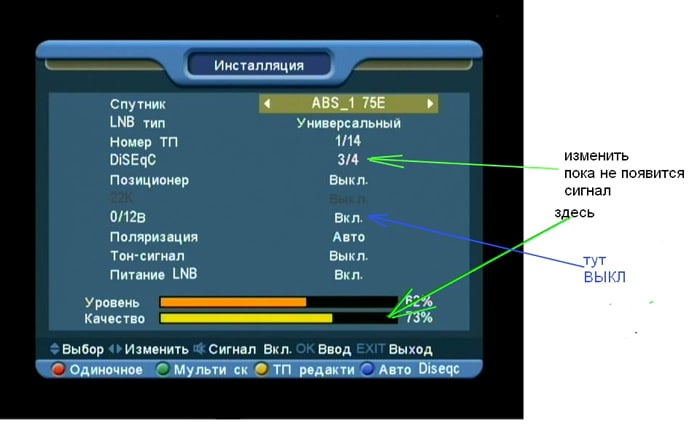
- When the signal “LEVEL + QUALITY” appears, you need to focus on “QUALITY”. A vertically standing antenna turns right and left, in the absence of a signal, the slope changes. When a signal is caught, we achieve the maximum. Then we start Scanning and see if we have chosen the right satellite.
- We tighten the fixing nuts.
- We connect the converter to the desired input.
- We connect the DiSEqC switch.
- In the menu of the satellite receiver in the “Antenna installation” mode, having selected the converter settings, we set DiSEqC in turn on the satellites.
- In the “Automatic setting” mode, we scan all the satellites. We need to check if they are captured. If everything is fine, you can watch TV.
 The main types of satellite dishes: https://youtu.be/46D9LqMqbzo
The main types of satellite dishes: https://youtu.be/46D9LqMqbzo
How to install and set up a direct focus antenna
The principle of installation is similar, but the setup is slightly different. You need to find
the elevation and azimuth . They can be calculated with an online calculator. Study the menu, there is a section “Signal level”, which shows such important parameters as “Level” and “Quality”.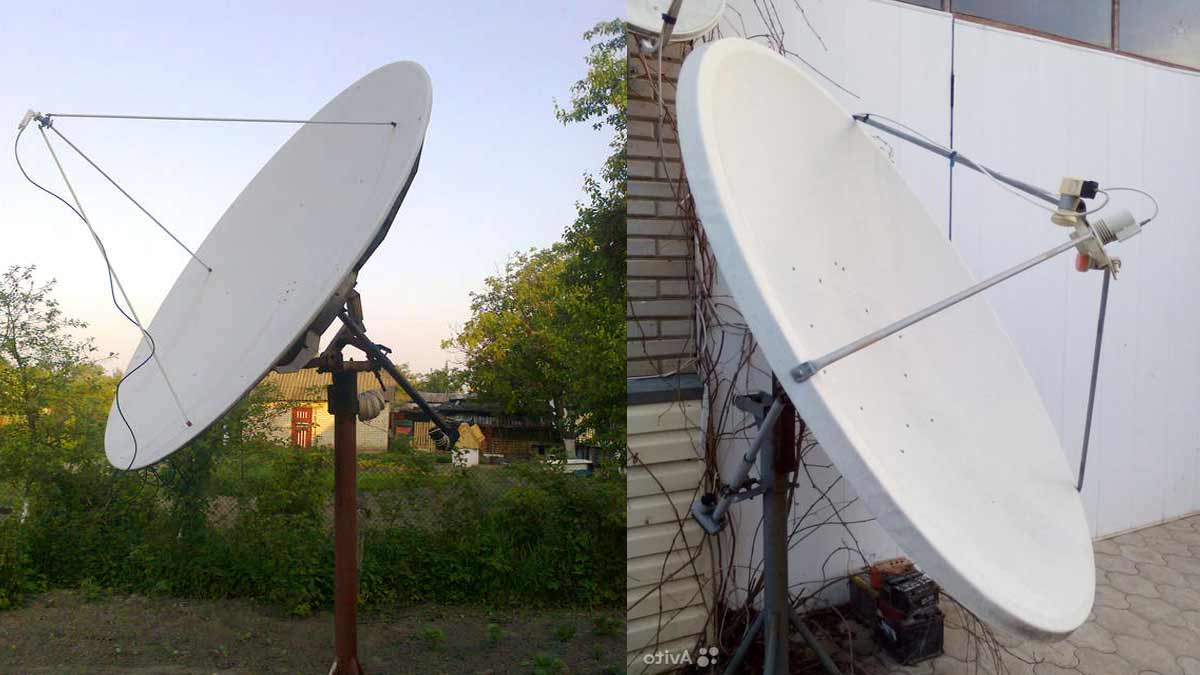 We assemble the antenna. At first, the details look like this:
We assemble the antenna. At first, the details look like this: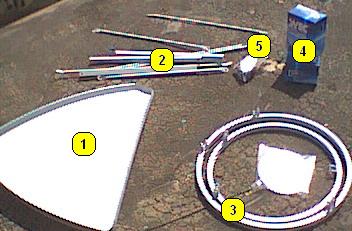 Assemble the reflector. If there are washers, they must be installed. The stronger the design, the better, you need to use all these attributes.
Assemble the reflector. If there are washers, they must be installed. The stronger the design, the better, you need to use all these attributes. We connect the halves with the help of clamps and nuts.
We connect the halves with the help of clamps and nuts. We assemble the support structure, fasten the leg with a clamp.
We assemble the support structure, fasten the leg with a clamp. Select fasteners. Next, you need to set the plate on the leg. Then the whole structure is assembled, the legs of which resemble a spider. The inner pipe should protrude about 2 meters. The scale on the legs, if any, is set somewhere at 38-40. Setting up a direct-focus satellite dish for two satellites Yamal (90) + ABC (75): https://youtu.be/4vixVSd_-RY
Select fasteners. Next, you need to set the plate on the leg. Then the whole structure is assembled, the legs of which resemble a spider. The inner pipe should protrude about 2 meters. The scale on the legs, if any, is set somewhere at 38-40. Setting up a direct-focus satellite dish for two satellites Yamal (90) + ABC (75): https://youtu.be/4vixVSd_-RY
Operation features
Sometimes the antenna signal is too weak. Then you need to check if the plate mirrors are deformed in such a way that it resembles a figure eight. It is important that, if you look at the reflector parallel to the opening, the edges merge into a single line. If the receiver does not work well, you need to buy a new one. Sometimes it is necessary to purchase a converter with a less significant noise figure. Sometimes you can buy another copy of the same lot. It is important that the converter feed is in accordance with the f/d of the reflector.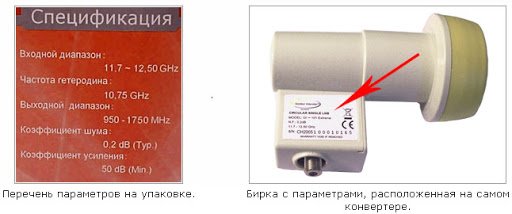
Interesting fact. Twice a year, at the autumn and spring equinoxes, the sun appears in line with the satellite and the receiving antenna. Then the solar radiation is in the converter along with the satellite signal. This degrades the signal quality. This can damage the equipment. Therefore, it is necessary to place a cardboard or polyethylene (opaque) screen in front of the irradiator in time.
How to choose a plate for your tasks
Each antenna is good in its own way. Offset is convenient to install along the wall. They do not get snow and rain.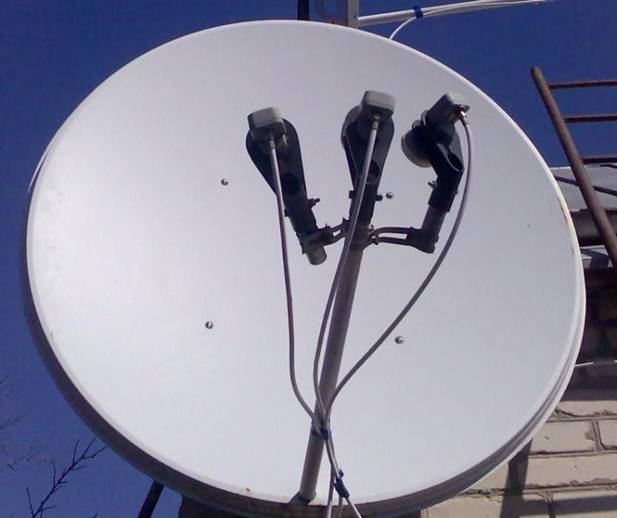 A parabolic antenna is often associated with a satellite [/ caption] But a direct-focus antenna has an electromagnetic spot on the feed, free from all sorts of distortions, which affects the image in a positive way. Offset antenna is not affected by precipitation. It has a center of gravity fixed at the bottom. But a direct-focus antenna is served on a larger scale. Therefore, it is up to the owners to decide which antenna to choose. To some extent, it is more convenient to use an offset plate, especially since it is preferred in private homes. But at the same time, both antennas are good in their own way. If desired, many manage to protect a direct-focus antenna from precipitation. It is enough to protect the converter irradiator itself with a small visor from a plastic bottle. Therefore, both variants of plates are good in their own way, it is necessary to proceed from the individual situation.
A parabolic antenna is often associated with a satellite [/ caption] But a direct-focus antenna has an electromagnetic spot on the feed, free from all sorts of distortions, which affects the image in a positive way. Offset antenna is not affected by precipitation. It has a center of gravity fixed at the bottom. But a direct-focus antenna is served on a larger scale. Therefore, it is up to the owners to decide which antenna to choose. To some extent, it is more convenient to use an offset plate, especially since it is preferred in private homes. But at the same time, both antennas are good in their own way. If desired, many manage to protect a direct-focus antenna from precipitation. It is enough to protect the converter irradiator itself with a small visor from a plastic bottle. Therefore, both variants of plates are good in their own way, it is necessary to proceed from the individual situation.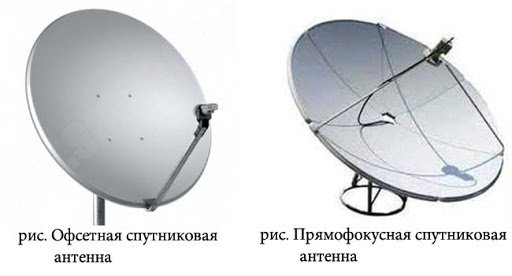
Conclusion
So, satellite dishes, which are offset and direct focus, both perfectly catch satellite signals, this is their similarity. They differ in the position and partly in the shape of the paraboloid, namely, the offset antenna stands at a right angle, and the direct focus antenna is located horizontally. The offset antenna is better protected from all kinds of precipitation, and it has a better center of gravity, although the axisymmetric dish has an undistorted electromagnetic spot.
